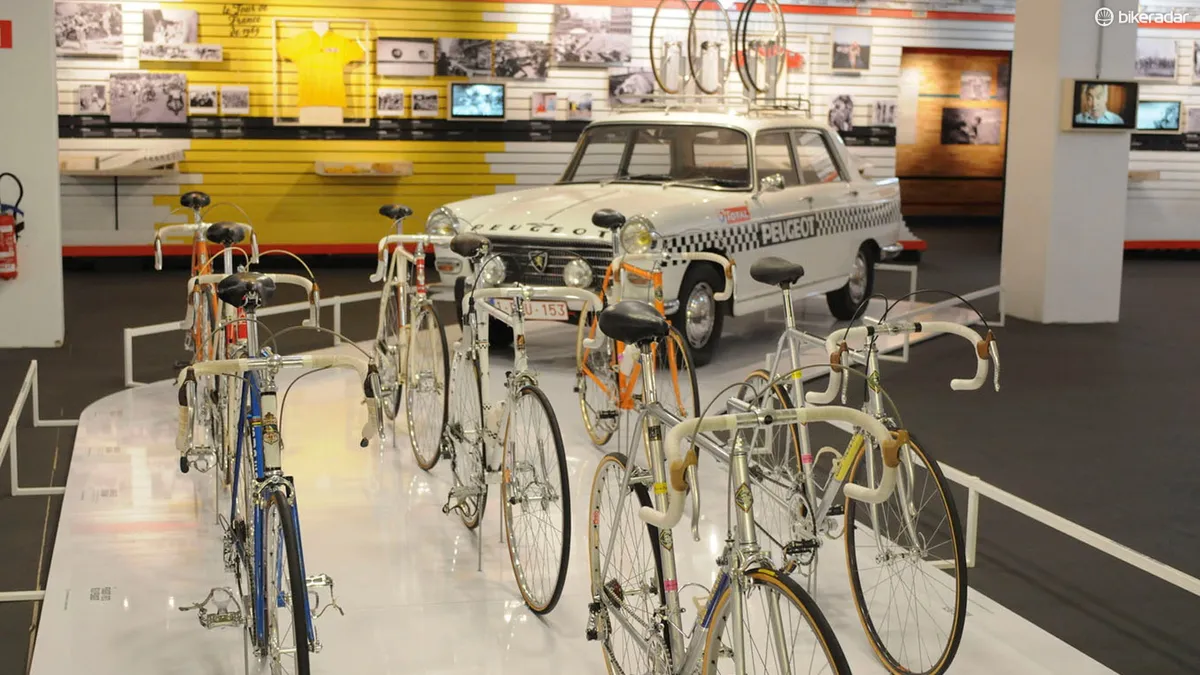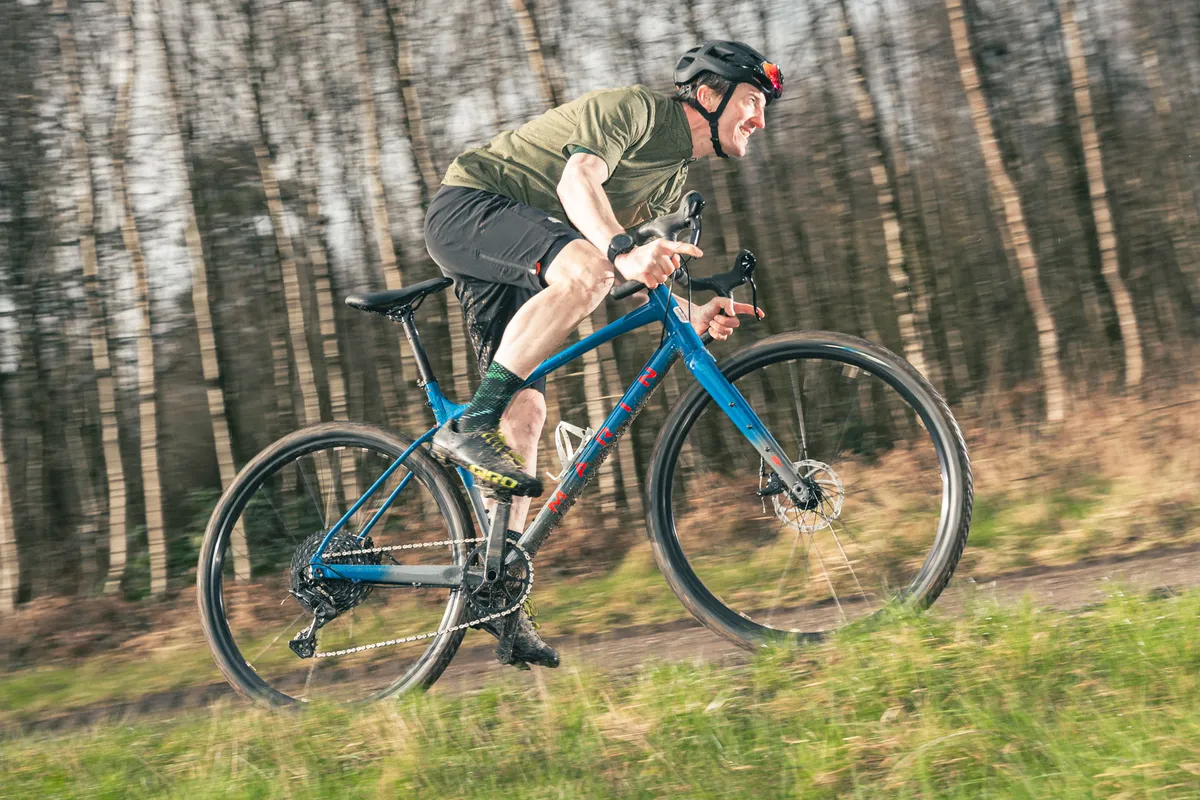When Shimano announced its all-encompassing CUES drivetrains, it was set to be the one-stop solution for all affordable bikes.
Out would go Acera, Altus, Alivio, Claris and Sora – and even Tiagra’s days would be numbered, it was suggested. Essa may well continue, but that has always seemed like Shimano’s forgotten child, anyhow.
At the time, I had my reservations about this plan. The idea of one family across 9, 10 and 11 speeds, and spanning bikes from commuters to gravel, mountain and road, in 1x and 2x iterations, especially with the existing Shimano ecosystem, seemed a bit much.
It seemed a tall ask after decades of multiple groupsets, but a very bold statement of intent, nonetheless.
CUES has some major advantages, though. LinkGlide chains last three to four times longer than Hyperglide chains, and the crankset and chains will work across 9, 10 and 11 speeds.
While I could get behind Shimano's business decision to simplify a sometimes-mystifying array of named groupsets, the problem I saw was more about aspirations.
Aspire to the best

Back in the 1980s, when I’d spent a school summer holiday working as much as I could on a local farm, and part-time evenings restocking shelves in my local Kwik Save supermarket, I saved enough to buy a Peugeot Carbolite road bike (a cheap European steel alternative to premium Reynolds 531).
I bought that bike because, firstly, it had Robert Millar's name on the top tube and, secondly, because of the gearing on it.

The crankset was a cheap Simplex model and the brakes were from Weinmann, but the down tube shifters and rear derailleur were both Shimano 600 EX. Both looked like the Dura-Ace ones I’d seen ridden in the Milk Race peloton as it went through my Leicestershire home town that year.
I could never have afforded a tour-ready ride, but this was the next best thing.
It was the same when mountain bikes became my focus. In the 90s, brands would deck out a bike in Shimano DX or LX, then add in a highlight component. I once bought a GT Pantera mainly because it came with an XT rear derailleur, and that was pro stuff at the time.
My point is, if I were buying my first serious bike as a 12- or 13-year-old today, I still think I’d want that pro connection. My first serious ride would have some pro-tour or world champs DNA in it, no matter how tenuous the link.

The problem with CUES is you're more likely to see it on your mum or dad’s commuter bike. The desirability just isn’t there.
Have the big three abandoned beginners?

It’s a misstep I think Campagnolo was also guilty of when it abandoned Xenon, Centaur, Chorus and Mirage; in doing so, it effectively abandoned new riders. By shifting to only selling ultra-high-end premium groupsets, you’ll grab headlines, but will you secure the custom of new, young riders?
Shimano used to clean up when it came to new/younger riders, with SRAM also guilty of not serving the entry/youth road market well enough. Its mechanical road groupsets have remained in stasis for too long, preferring instead to focus on its AXS drivetrains.
And while Apex XPLR mechanical is excellent for gravel bikes – good enough for me to choose it when I revamped my own Cannondale Slate – it could be too little too late.

Now it seems Shimano has done the same, but is it about to perform a U-turn?
No CUES for the road

I’ve quizzed a few product managers from large-scale bike brands, and the story remains the same. While initially they liked the idea of CUES, the reality is a set of components that look rather chunky for racy road bikes and one that holds little desire for road product managers.
If you look at the ranges offered across the board, since Shimano announced the drop-bar iteration of CUES, it has almost zero presence on road bikes.
Gravel take-up has been more pronounced, with Cube, Kona, Giant and Trek all offering CUES bikes with both 1x and 2x drivetrains.
That said, across the board, when it comes to road bikes at the entry level, in the £1,000 / $1,200 ballpark, it’s mainly still Tiagra or even cheaper old Shimano stock such as Claris (as found on Trek’s Domane AL 2 Gen 4).
Confusion among product managers remained, because even though both Sora and Tiagra had been retired and replaced by CUES, they were still available to order.
I have been told that’s because there is a lot of existing stock of the cheaper Shimano groupsets, so perhaps competitive wholesale pricing is a factor – or the industry is trying to clear lots of pre-sales before making the switch to Shimano’s new line-up.

However, Tiagra retains much more of a cache than CUES. Rumours even abound that Tiagra may have got an 11th-hour reprieve from the axe, and it will, in fact, be coming back.
That would make sense and make it the spiritual successor to the legendary mechanical 11-speed 105 groupset, now that 105 R7100 has increased in price and gone electronic, and is Shimano’s only 12-speed mechanical road groupset.
If CUES is here, then what’s GRX RX400 for?

On the other hand, CUES has seen a good take-up on gravel, but even that has confused a lot of product managers. Because CUES is available in 9, 10 or 11-speed, it spans from Shimano’s old entry-level (and an upgrade from 8-speed Claris) up to Tiagra level.
This is a good thing, but it's confusing because Shimano’s gravel-specific GRX also comes in 10 and 11 speeds for RX400 and RX600, respectively.
As a product manager, the choice seems clear: use RX400 and RX600 because you get the glow of top-level GRX RX820, which has been raced at the highest level.
However, that will soon change, because it looks like, according to Shimano’s website, from now on GRX is 12-speed only. That means forcing brands to move across to CUES if you don’t want the expense of 12 sprockets.
Currently, brands seem to reserve CUES for the entry-level (9-speed), which further hampers any aspiration around CUES ownership.
I know, if given the choice, I’d opt for a GRX-equipped gravel bike (or SRAM Apex) over CUES because it simply doesn’t have the same draw as the groups where I can see the influence of top performance components.
That's not to say I've had any bad experiences of CUES. In fact, it has impressed me greatly in its flat-bar form on bikes I've tested, and I'm looking to combine elements of CUES drivetrains and shifters on my ongoing 90s MTB-to-gravel-bike conversion project.
Essentially, now the price point has shifted, we are being ‘encouraged’ into CUES at a much higher level, with none of the cache that GRX could attract.

In fact, even at this level, we’re seeing challenger brands such as Microshift offering solid alternatives, with some good options on gear range and clutch-equipped derailleurs. Note this is something Shimano doesn’t offer on the lower-tier CUES derailleurs (U4000), instead relying on simply a stronger spring for chain management.
Nobody is queuing for CUES

What does all this mean for CUES in the long term? It will certainly stay around, and it’ll grow. It's already being used extensively in the less glamorous commuter and trekking spheres, and the electronic iteration has gained traction on urban ebikes and utility bikes, undoubtedly.
Because take-up on performance bikes has been slow, I’d hazard a guess that Shimano will quietly reposition CUES as an affordable, reliable, utility groupset for a wide range of bikes, including entry-level gravel bikes. It would then announce a new affordable performance groupset or two for the road.
And, given GRX is pushing upwards in the hierarchy, and once stock has been depleted on pre-2025 GRX RX400 and 600 series components, its shift to 12-speed only will be complete..
Shimano will have created a hole in its offering, forcing brands to adopt CUES as their entry into gravel.
Once the reserves of older Shimano road groupsets dry up too, it’ll inevitably mean CUES comes to road bikes too, especially because Shimano has no mechanical offering below the relatively expensive 12-speed 105 R7100. In a year or so, things will be a lot clearer.
But, at the moment, CUES seems to be muddying the waters, which is exactly the opposite of what Shimano set out to do.
Right now, that may be leaving the door open to upstart drivetrain manufacturers such as L-Twoo, TRP, Wheeltop, Microshift and SunRace, who could well take a lasting bite out of Shimano’s hegemony.




